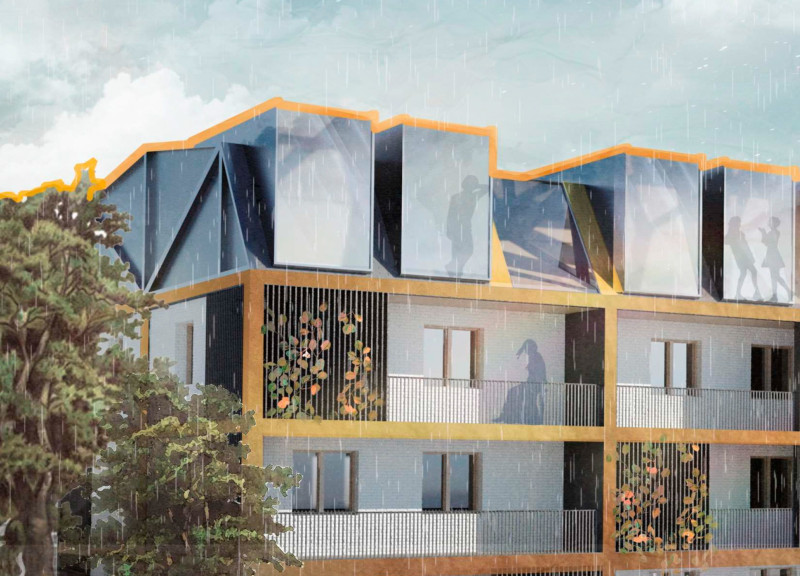5 key facts about this project
The primary objective of this architectural design is to create an efficient living environment that promotes well-being through the integration of nature and community spaces. The structure features an external framework that supports additional layers of habitation, allowing for modular configurations that cater to diverse residential needs.
Creating Synergy with Existing Structures
A notable feature of the project is its approach to existing buildings. By constructing an external steel framework, the design efficiently incorporates new residential units atop established structures. This method not only preserves the architectural integrity of the existing buildings but also provides opportunity for expanding usable space without extensive demolition. Additionally, the incorporation of landscaped areas and green roofs promotes biodiversity and contributes to a healthier urban environment.
The project emphasizes vertical growth, enabling units that benefit from natural light and outdoor access through terraces and balconies. The extensive use of glazing enhances visibility both for inhabitants and the surrounding cityscape, reinforcing the connection between indoor living and outdoor spaces. This design choice also improves energy efficiency by maximizing passive solar gains.
Integration of Green Spaces
A distinguishing aspect of this project is its commitment to integrating green spaces within the residential framework. The design incorporates communal gardens, planted balconies, and green roofs, creating a multi-layered landscape that fosters interaction among residents. These spaces serve as gathering areas, contributing to a sense of community while also providing residents with access to nature, essential for well-being in an urban context.
The architectural choices reflect a clear intention to prioritize sustainability. The use of durable materials such as steel and glass not only ensures structural stability but also aligns with the project’s environmental goals. Furthermore, the biophilic design elements enhance the quality of life for residents by encouraging outdoor engagement and connection with natural systems.
The combination of modular living arrangements, efficient use of existing structures, and the emphasis on green spaces marks this project as a comprehensive architectural solution for modern urban challenges. This approach aligns with contemporary design principles focused on sustainability and community-focused living.
For a deeper understanding of the architectural plans, sections, and specific design ideas employed in this project, readers are encouraged to explore the full presentation. Engaging with the various architectural elements will provide insights into the innovative strategies and solutions that define this project.























